Mobile communications with Exchange Server 2007 - Part 1: New device features and improvements
Support of Exchange ActiveSync (EAS) in Exchange Server products has been launched since the Exchange Server 2003 RTM version. However, until the release of Exchange Server 2003 SP2, DirectPush technology (aka AUTD v2) as well as newly introduced device security policies, mobile communications were widely deployed in full organizations. bridge. With DirectPush, the Exchange Server product can provide an authentic feel, new items are synced instantly to a device whenever a change occurs within the mailbox.
Exchange Server 2007 takes mobile communications to a higher step by providing new user support features, increased security and management options built directly within the Exchange management window. Management Console (EMC). In this part 1, we will introduce you briefly about the new mobile device features and their improvements.
Mobile device improvements
One of the advantages of the Exchange product group is that it has been perceived by mobile devices as the Outlook client's feelings, so Exchange Server 2007 provides a number of new user features. Remember, most new features require Windows Mobile 6.0 (known as Crossbow) on the device.
Most of you know that the combination of Windows Mobile 5.0 with MSFP and Exchange Server 2003 has provided us with the following features:
- Direct Push
- GAL Lookup
- Tasks synchronization
- Device policies
- Local Wipe
- Remote Wipe (via separate Web tool)
- Outlook Mobile Access (OMA)
We will introduce all the new features of Exchange 2007 by combining Exchange Server 2007 and Windows Mobile 5.0 with MSFP or Windows Mobile 6.0.
Support for HTML notifications
As shown in Figure 1, messages can be viewed in HTML format, which means you can read the message including HTML code, tables, etc. (as the format is used in most Notification letters of MSExchange.org).
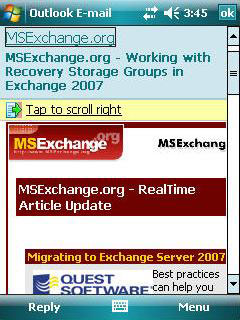
Figure 1 : HTML message
In addition, a way to handle email messages in HTML format will not break their format, and keep HTML email streams intact. In the past, mobile devices often convert the notification type into simple text. This is also reasonable when you have processed or deployed the message in HTML format.
Support the flag
You can see in Figure 2, Exchange Server 2007 also supports the use of flags. This flag set from a device will be synchronized with the mailbox and can then be observed in both Outlook and OWA. One way to use the other flags is that they are set by selecting the corresponding notification, then selecting the Quick Flag option under the Menu button in the lower right corner of the screen.
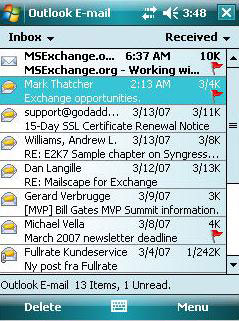
Figure 2 : Message flags
Support for quick notification retrieval
You may feel satisfied with what is shown in the body of the email notification for Exchange server 2003 SP2, but in Exchange Server 2007 it is much improved. For example, instead of having to quickly choose Mark to download or click to get the rest of this message, everything will happen automatically in the back and make users feel more interesting.
Get important information
You can synchronize valuable information for mobile devices because there is quite a lot of similar information available in the Outlook client. Can promote or handle meeting requests (an important feature) as well as view each person's acknowledgment status. In addition, you can even look up more information in the GAL of each person.
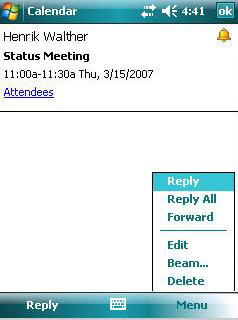
Figure 3 : Handling or promoting a meeting.
New improvements in time are displayed similarly in Outlook 2007 and OWA 2007.
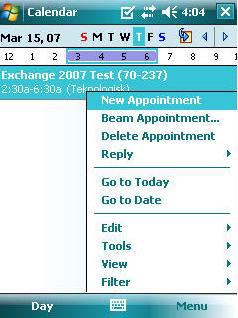
Figure 4 : Schedule
Advanced search
With Exchange's advanced search feature, you can search the entire mailbox instead of just the messages saved locally on the mobile device. The search function supports query filters and many other features, meaning you can search for notifications by using test, data, from, to, flag, categorie (categories), attachments (attachments) , the importance and limitation of specific schools.
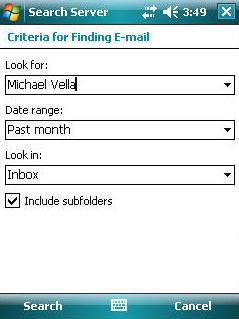
Figure 5 : Searching in Mailbox on the server
In Figure 6 we can see the results of the search. You can completely browse through this entire notification subject.
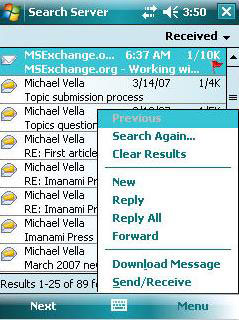
Figure 6 : Search results
SharePoint and access to file sharing documents
You can access documents saved in file servers (UNC shares) or SharePoint servers. The sender simply needs to have an internal link to the documents as shown in Figure 7.
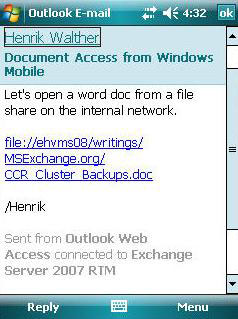
Figure 7 : Linking documents in Message
Click the link in Figure 7, you will open the corresponding document using Word Mobile as shown in Figure 8 below.
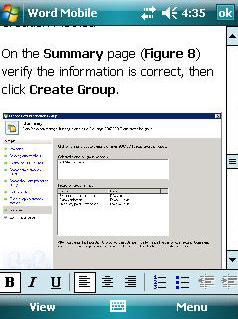
Figure 8 : Open the word document
Reset PIN / Password
Exchange Server 2007, you may need to enter the mobile device password after a period of inactivity. If the device password is forgotten, you can still open the device with a recovery password. This password can be obtained by the user itself (via OWA 2007), so the number of calls to the support center has decreased significantly.
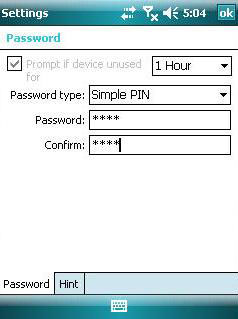
Figure 9 : Reset password / PIN
Advanced security through password policies
Exchange Server 2007, you can enhance the security of mobile devices by configuring additional password request settings such as checking password history, expiry date, and by not allowing users to use it. Password is too simple. You even have an option to encrypt the data stored on the mobile device (including the device in the storage card). We will take a closer look at the device protection passwords available in Exchange Server 2007 in Part 2.
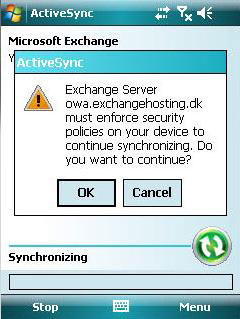
Figure 10 : Apply EAS Mailbox Policy
Autodiscover
Like Outlook 2007, Exchange 2007 ActiveSync supports a new service that is Web-based AutoDiscover. The support of AutoDiscover simplifies the necessary needs, because you only need to specify the email address and password when configuring the device.
Support for external Office configuration (OOF)
Like Outlook 2007 and OWA 2007, you can set up messages outside Office (Out of Office) directly from your mobile device. OOF messages are stored directly on the Exchange 2007 server, so an OOF message set up on a mobile device can be viewed in Outlook as well as OWA.
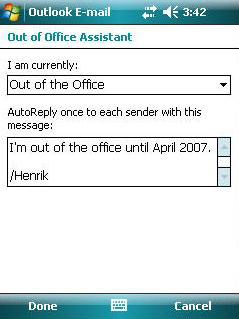
Figure 11 : Out of Office Support
The features are dropped or interrupted
I'm sure you will agree that these are some of the new features and improvements in a comprehensive way. Unfortunately, some features are not included in the RTM version of Exchange Server 2007. Here is a list of those features:
Always-Up-To-Date version1 (AUTD v1)
With Exchange Server 2007, Exchange Server products support AUTD V1. AUTD V1 makes it possible to keep your device constantly updated by creating an Exchange store event in the user's mailbox. When an archive event detects a change in the mailbox, it activates the Short Message Service (SMS) control message, which is sent to the user's mobile device. When this device receives an SMS message it will initiate synchronization with the Exchange server. The idea behind AUTD technology is great, but it does not work well in practice because there are very few mobile activities that support AUTD v1. Microsoft technology expert knows this when they deploy Exchange 2003 based on mobile notifications in several of their own organizations - an organization spread around the world.
Information Rights Management (IRM)
Initially, the plan included IRM to support mobile devices with the RTM version of Exchange Server 2007, but because of some stability issues, this feature was removed before it was released. IRM will be launched when Exchange Server 2007 SP1 is released.
Outlook Mobile Access (OMA)
OMA is also interrupted and therefore will not be available in Exchange Server 2007 SP1.
Support for S / MIME
As with OWA 2007, the RTM version of Exchange Server 2007 also does not support S / MIME. This is due to the fact that the Exchange product group does not have enough time to complete before it is released.
Conclude
In this article, I have explained some of the new features of Exchange Server 2007. Remember that there are many exciting new features that require Windows Mobile 6.0. This is also a disadvantage for organizations using devices running Windows Mobile 5.0 and lower, especially there is no way to upgrade those devices to Windows Mobile 6.0. The things you find interesting for most new devices released today run on Windows Mobile 6.0.
In Part 2 of this article , we will introduce more about the new features and improvements on the server side (server side).
You should read it
- Transfer from Linux Mail Server to Exchange Server 2007 (Part 1)
- Discover EMC in Exchange Server 2010 (Part 2)
- Mobile messaging in Exchange 2003 - Part 3: Installation, administration, and use of Microsoft Exchange Server ActiveSync Web Administration tool
- Discover advanced features of Exchange ActiveSync in Exchange Server 2007 SP1
- Switch from Exchange 2000/2003 to Exchange Server 2007 (part 1)
- Transfer Exchange 2003 to Exchange 2007 (Part 2)
- 6 leading Exchange Server monitoring software
- Transfer Exchange 2003 to Exchange 2007 (P.7)
May be interested
- Introducing Exchange Server 2019, how to install Exchange Server 2019
 exchange server 2019 is designed to deliver security, performance, and improved manageability and operations - properties microsoft's biggest customers have come to expect from exchange.
exchange server 2019 is designed to deliver security, performance, and improved manageability and operations - properties microsoft's biggest customers have come to expect from exchange. - Installing, configuring and testing Exchange 2007 CCR on Mailbox Server (Part 1)
 exchange server 2007 introduces a number of new features, one of which is the cluster continuous replication (ccr) feature. this feature requires the log file transfer of the new exchange server 2007 and replay features, plus a combination of them.
exchange server 2007 introduces a number of new features, one of which is the cluster continuous replication (ccr) feature. this feature requires the log file transfer of the new exchange server 2007 and replay features, plus a combination of them. - Discover the new Export List feature of Exchange Server 2007 Service Pack 1
 exchange server 2007 service pack 1 (sp1) introduces many new gui features for the user interface (ui) of the exchange management console. we have introduced a lot of new features as well as improvements to pre-existing ui features in some of the previous articles and themes. in this article, we will only introduce a t & iacu
exchange server 2007 service pack 1 (sp1) introduces many new gui features for the user interface (ui) of the exchange management console. we have introduced a lot of new features as well as improvements to pre-existing ui features in some of the previous articles and themes. in this article, we will only introduce a t & iacu - Removing the first Exchange 2003 server (Part I)
 deactivating an old exchange 2003 server is a fairly easy process. but you will need to add some steps if it is the first server installed in an administrative group. the reason is because the first exchange server is in & oacu
deactivating an old exchange 2003 server is a fairly easy process. but you will need to add some steps if it is the first server installed in an administrative group. the reason is because the first exchange server is in & oacu - Checking Exchange Server 2007 with MOM 2005 (Part 2)
 in part one, i showed you how to manage exchange server 2007 with mom 2005. in this second part, you have an environment that has exchange server 2007 management pack installed and exchange server 2007 internally installed with mom a.
in part one, i showed you how to manage exchange server 2007 with mom 2005. in this second part, you have an environment that has exchange server 2007 management pack installed and exchange server 2007 internally installed with mom a. - Transfer Exchange 2003 to Exchange 2007 (Part 3)
 in the previous two sections, we installed the first exchange 2007 servers, combining hub transport and client access servers in an exchange 2003 environment.
in the previous two sections, we installed the first exchange 2007 servers, combining hub transport and client access servers in an exchange 2003 environment. - Mobile messaging in Exchange 2003 (Part 1): Introduction to Microsoft's DirectPush technology
 one of the interesting features included in the exchange 2003 sp2 package is directpush technology (autd v2), which gives new impressions of mobile messaging to users.
one of the interesting features included in the exchange 2003 sp2 package is directpush technology (autd v2), which gives new impressions of mobile messaging to users. - Removing the first Exchange 2003 server (Part II)
 in part 1 of this series, we looked at the steps needed to copy some important system folders to a new exchange server that is also installed in the administrative group. we also provide the necessary steps to ensure
in part 1 of this series, we looked at the steps needed to copy some important system folders to a new exchange server that is also installed in the administrative group. we also provide the necessary steps to ensure - Learn about the Security Configuration Wizard in Exchange Server 2007 - Part 1
 in the following article, we will introduce you some basic characteristics of security configuration wizard - scw of exchange server 2007, with the main purpose of minimizing the possibility of attack on the system. exchange server by turning off services, ports, features and programs is not really necessary ...
in the following article, we will introduce you some basic characteristics of security configuration wizard - scw of exchange server 2007, with the main purpose of minimizing the possibility of attack on the system. exchange server by turning off services, ports, features and programs is not really necessary ... - Transfer Exchange 2003 to Exchange 2007 (Part 1)
 in this series, we will learn how to migrate data from exchange server 2003 system to exchange server 2007 system.
in this series, we will learn how to migrate data from exchange server 2003 system to exchange server 2007 system.










 Mobile communication with Exchange Server 2007 - Part 2: Mobile device management
Mobile communication with Exchange Server 2007 - Part 2: Mobile device management Free use of Google Apps For Your Domain service
Free use of Google Apps For Your Domain service To secure your ADSL modem
To secure your ADSL modem Pixma printers specialize in office printing
Pixma printers specialize in office printing 10 reasons to install Windows Server 2008
10 reasons to install Windows Server 2008 Ze-ro day prevention
Ze-ro day prevention